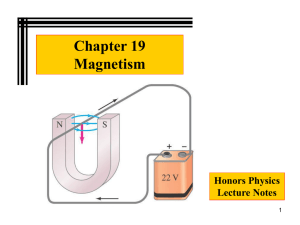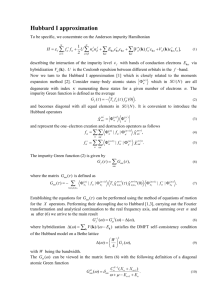Lec 21 (Powerpoint, 231 kB)
advertisement
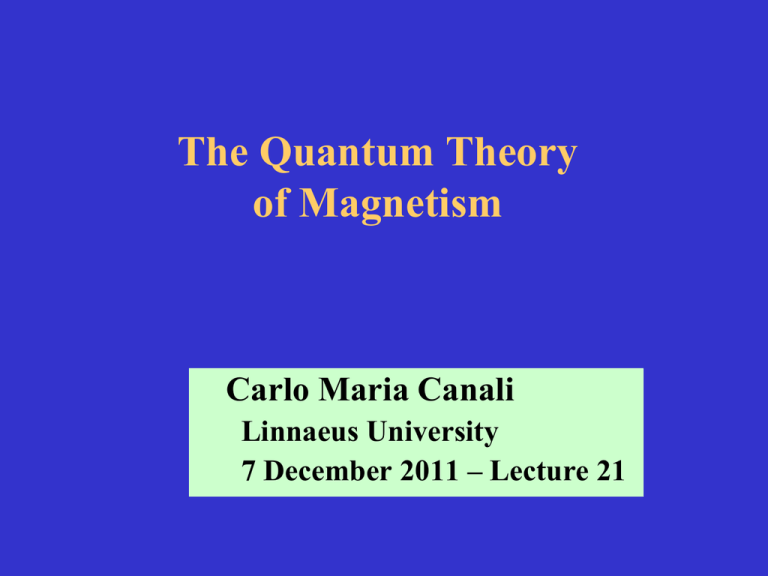
The Quantum Theory of Magnetism Carlo Maria Canali Linnaeus University 7 December 2011 – Lecture 21 VI. Itinerant electron magnetism Final discussion A. Phase diagram of the Hubbard model B. Magnetism in TM and alloys: properties and alternative approaches (LSDA) C. Metallic ferromagnetism in Hubbard models for A few references: A. B. C. D. W. Nolting ”Quantum theory of magnetism” P. Fazekas ”Lecture notes on electron correlations and magnetism” Jurgen Kubler ”Theory of Itinerant electron magnetism”, Oxford ”Band ferromagnetism”, K. Baberschke, M. Donath and W. Nolting (Eds) – Springer * ”Metallic Ferromagnetism – An electron correlation phenomenon”, by V. Vollhard et al. * ”Ferromagnetism in the Hubbard model”, by Nolting et al. Can the Hubbard model describe ferromagnetim in transition metals (Fe, Ni, Co) ? 1. Ferromagnetim is not a generic feature of the Hubbard model 2. In simple cubic one-band Hubbard model: ferromagnetism can (perhaps) exists on for unrealistically lare values of U/t 3. TM are systems intermediate correlation strength (intermediate U/t) need new many-body _ non-perturbative techniques_ to analize this regime State of the art on the Hubbard model 1. Some phenomena reasonably well-described bu Hubbard model (antiferromagnetim in insulator) 1. Need some ”fine tuning” (choice of lattice, band structure, multi-band models) to describe ferromagnetim in transition metals partial success 3. For other more complicated phenomena (some ferromagnets, strongly correalted systems and high-Tc materials) the ”correct model” has not been found yet. Magnetism in TM and alloys 1. Systems with moderate correlations 2. Which electrons are involved? Look near the Fermin energy at EF a moderate wide d-band overlaps with a wide 3d band (e.g. Fe: 3d band width is 4.6 eV -- 4s band is 24 eV) D(EF) ~ D3d(EF) + D4s(EF) 3. Band filling / number of electrons per atom: non-integer filling due to band overlap (e.g Fe: 3d band holds ~ 6.5 electrons, 4s band has 1.5 electrons) 4. Lattice models perhaps not the most promising approach (?) Alternative approach: Local Spin Density Approximation (LSDA) of DFT 1. Very successful in predicting main magnetic GS properties of TM i. is the system magnetic or not, ii. what is the magnetic moment/atom iii. progress in computing orbital moments and magnetic anisotropies 2. Connection with Stonet theory i. Can derive an ”energy expression” similar to the Stonet theory ii. Can calculate the ”Stoner” parameter I (from exchange splitting beween the up-spin and down-spin bands) & D(E_F) 3. Problem: can we find a Hubbard model that can be realted to the LSDA??
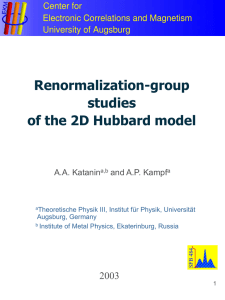


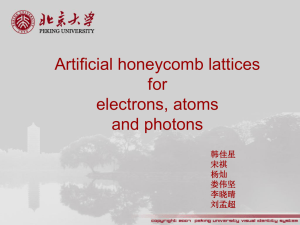

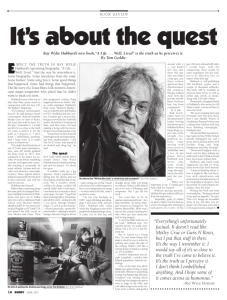
![Semiconductor Theory and LEDs []](http://s2.studylib.net/store/data/005344282_1-002e940341a06a118163153cc1e4e06f-300x300.png)

